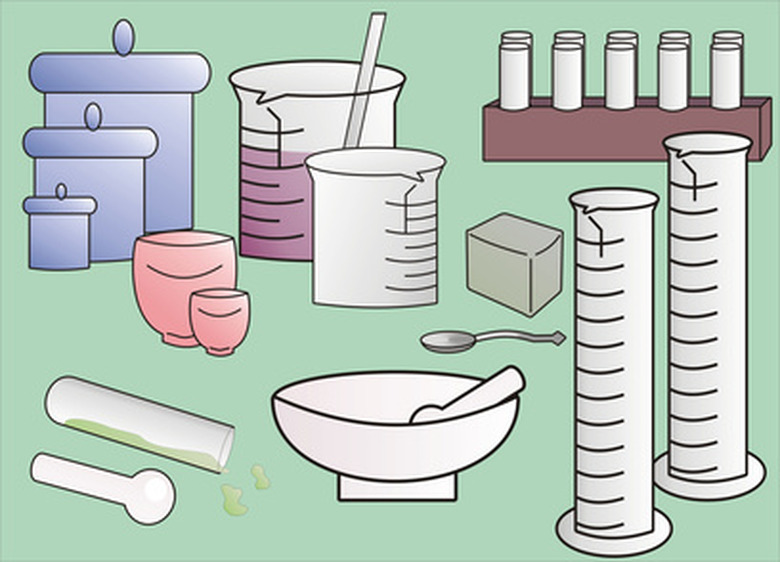How To Calibrate A Calorimeter
A calorimeter is a device that can measure the heat released or absorbed in a chemical reaction. An example of a simple calorimeter is a water-filled styrofoam cup that has a a partially enclosed cover. A thermometer is placed through the small opening to measure the change in water temperature. There are also more advanced types of calorimeters. Calibrating a calorimeter is relatively simple and can be done in a few steps.
Instructions
Step 1
Measure the observed change in temperature with the actual shift in temperature that results from the transfer of heat. A simple way of doing this is to send a current through the calorimeter for a set amount of time.
Step 2
Write down the equation Q = I x V x T. I represents the current, T represents time and V represents voltage. Use this equation to calculate Q, which represents the amount of heat that is electrically given to the calorimeter following a reaction.
Step 3
Use the observed rise in temperature to compute the heat capacity of the calorimeter. This is also referred to as the calorimeter constant. The equation is as follows: C = Q / (change in temperature). You will have to input Q and the observed change in temperature to find out the calorimeter constant.
Step 4
Use the equation Q = C x (change in temperature when a substance is burned in the calorimeter). For the value of C, you can input the answer from step 3 . For the change in temperature, input the observed temperature change when the substance in question is burned in the calorimeter.
Step 5
Write down your answer. This represents the heat transfer of the reaction and this will help to calibrate the calorimeter. This represents the way a person can electrically calibrate a calorimeter.
References
Cite This Article
MLA
Mohammad, Asad. "How To Calibrate A Calorimeter" sciencing.com, https://www.sciencing.com/calibrate-calorimeter-7615266/. 24 April 2017.
APA
Mohammad, Asad. (2017, April 24). How To Calibrate A Calorimeter. sciencing.com. Retrieved from https://www.sciencing.com/calibrate-calorimeter-7615266/
Chicago
Mohammad, Asad. How To Calibrate A Calorimeter last modified August 30, 2022. https://www.sciencing.com/calibrate-calorimeter-7615266/
